Monthly Archives: March 2024
Creator Spotlight | An Interview with the Creators of Divination RPG
Divination RPG offers a transformative approach to tabletop roleplaying, merging the ancient tradition of tarot with the dynamic mechanics of RPGs. This game invites players to embark on a journey of self-discovery and adventure, navigating a world where the flip of a card determines fate.
In this exciting interview, we delve into the minds of the creators behind this innovative game, Matthew Muñiz and Nyx Tesseract, to uncover the inspiration, mechanics, and future for Divination RPG. Join us as we explore the fascinating world where destiny is woven with each card drawn, and where players become active participants in an unfolding narrative guided by the very tools of divination.
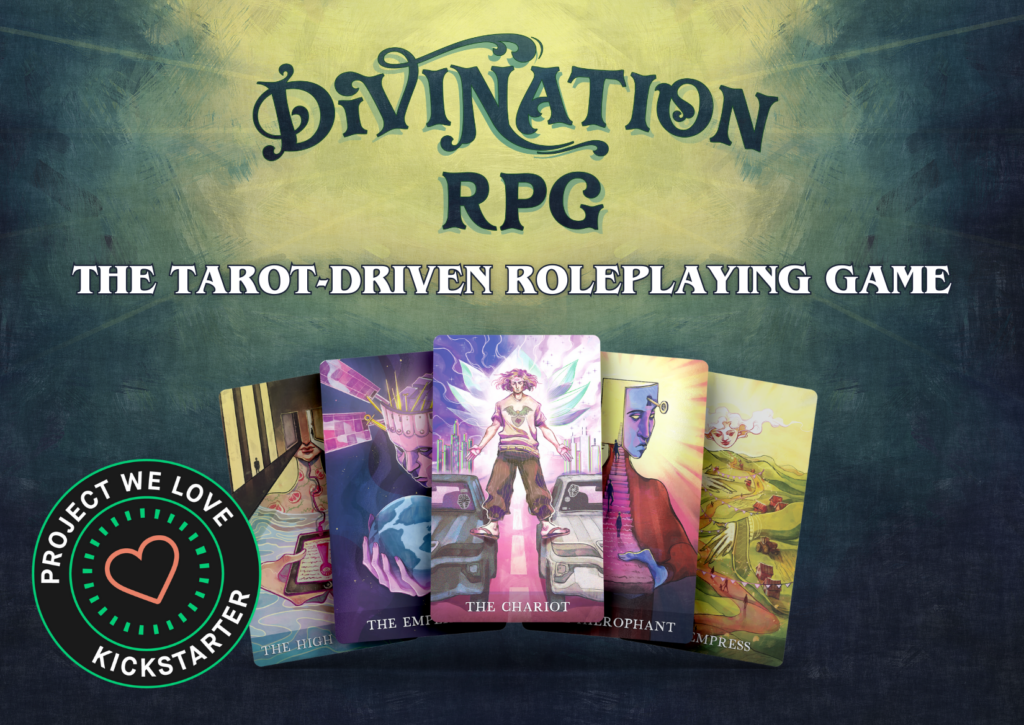
Don’t just consult the cards, adventurers! Support the Divination RPG Kickstarter!
What initially drew you to incorporating tarot into an RPG experience?
I’ve always used tarot as a part of my TTRPG ventures, I think. It’s been an idea generator, a generator for NPC motivations—a set of huge, abstract symbols from which to draw. So as I ran D&D games growing up, and later, World of Darkness games, I liked to use tarot to get ideas about plots, motivations, antagonists, worlds of magic, all kinds of stuff. I got my first Pixie (RWS) deck in my teenage years, and started running games for my friends right around the same time.
Matthew Muñiz
Were there influences other than tarot that served as inspiration for the game’s mechanics?
I loved the World of Darkness games from the 90s, and grew up on Basic and Advanced D&D—a childhood inheritance from my erstwhile-nerd parents. I liked how WoD games let you develop your character without levels (I recall that as revolutionary once upon a time, way back when). Those worlds also aspired to delve into the psychology involved in role-playing and character development. I think of those games as blazing a trail that now lots of other narrative-first games follow.
Some of those, like Bluebeard’s Bride and Kids on Bikes, use shared hero and shared character dynamics that really influenced Divination as well. As roleplaying games explore GM-lessness, elements of shared storytelling are becoming increasingly common, and I think those mechanics work beautifully in Divination because it’s based on tarot. Tarot is so much about introspection and personal growth, and so a game where the parts of the mind negotiate that (and sometimes fight over it) suits our world really well.
Matthew Muñiz

Can you walk us through the core mechanics of Divination RPG?
There are two main mechanics that make up the heart and soul of playing Divination. One is the shared Hero that Matthew mentioned, and the second is the performance of Tests.
You play Divination as one Aspect of a Hero, and your fellow players are also Aspects of that same Hero. Each Aspect embodies one set of drives and desires inside that person, which adds an additional element to roleplay. Sometimes one Aspect is in Control of the Hero and is navigating the world and dealing with NPCs just like any other roleplaying game, but at other times we zoom in to the internal and see the conversations happening between the Aspects—the Hero’s internal thoughts and conflicts and questions playing out live. Each player has an Aspect sheet which tracks the stats and abilities unique to them as an individual, and collectively the players share a Hero sheet which tracks the stats available equally to all of them.
Where all those different stats and abilities come in brings us to the other core mechanic of Divination: the Test. This is essentially your skill check, but it’s resolved by drawing a tarot card instead of rolling a d20. We use one portion of the tarot deck that contains numbered cards only, and draw a card to get a numerical result (after applying modifiers to reflect difficulty, stats, and Powers, of course). The number gives a clear success or failure, but the scene depicted on the card and the meaning of the card is rolled into the how of that success or failure as well.
Tests can be Active when the Hero is proactively acting on the world, or Passive when they need to respond to the forces of the world acting upon them.
Nyx Tesseract
How do you envision the concepts in Divination RPG fitting into the broader world of tabletop RPGs?
One of the things I’m personally most excited about is the way Divination handles the Hero’s experience of being hurt both physically and emotionally. We’ve separated this experience into Injury, which happens to the body, and Harm, which happens to the mind or the psyche. I don’t want to spoil too much of what you can discover playing the game, but I think we offer the opportunity for players to explore a lot of nuance in what it means to be hurt. This is something we’re really excited about offering to the gaming community at large, because I don’t think either of us has seen it handled or delved in quite this way before.
And I mean, it’s so tarot. It’s so tarot to explore every element of our human experience, the good and the bad, through a lens of non-judgmental curiosity.
Nyx Tesseract
How does interpreting the cards impact the gameplay and decision-making process for players?
The beautiful thing about Divination is that it’s both numeric, which means it can do the things that dice can do, and it’s pictorial, which means it speaks in the fuzzy, flexible language of pictures. When a Test is read, it does more than just tell the players whether or not they were successful at whatever they were trying to do—it can also suggest why. This almost always amounts to thoughts and feelings that influence the moment, but a Diviner is invited to weave the meanings they read in the cards into the story in any way that inspires them. This makes for emotional, profound moments where everyone is surprised by what they discover in the cards. I know we keep saying this, but it’s so tarot.
Matthew Muñiz
What challenges did you encounter while designing a system that incorporates both numerical crunch and interpretation of tarot cards?
It’s challenging to offer people permission to interpret tarot cards. People think they have to memorize long lists of meanings, but in my opinion, all you have to do is look at a picture and allow it to make you feel something. In Divination, we divide the tarot deck into smaller decks to make it easy to do this. The mechanical crunch is fairly easy, with +1s and -1s like other games.
You really just have to trust that you’ll look at a picture and seize the opportunity to be creative with what you see—or give yourself permission to skip that part when you want! You don’t have to interpret any moment that doesn’t make sense to you. A joy of Divination is allowing a symbol to persist and coming to understand what it means later.
Matthew Muñiz

Besides tarot’s role in the mechanics, how does tarot exist in the world and society of the game?
Tarot is baked into every part of our setting, which imagines two worlds: the Apparent and the Esoteric. The Apparent is the mundane world we all inhabit, and the Esoteric is the one populated by Artists—modern wizards who use the tarot and their unique connections to the Art to pursue their agendas.
These Artists each walk a Road that dictates what their connection to the Art is like. There are seven Roads in total, and each is wildly different. In Divination, you’ll make a single Hero on a single Road, so you get incredible replayability from our game as you explore all seven Roads. Each Hero on an Esoteric journey will be a part of a rich world full of competing agendas and surprises, all drawn from tarot.
Matthew Muñiz
What has been the community’s response to Divination RPG so far?
We’ve been just blown away by the way Divination seems to really touch every single person that touches it. I think the shared Hero is a huge part of that, and particularly the way the game builds that Hero. Our character creation process isn’t something you do at home before you show up to play; it’s almost a game in and of itself as the players are led through a series of story prompts (guided by tarot cards, of course) to tell formative stories about their Hero’s life. It acts as kind of an icebreaker, but in practice it becomes so much more than that. We run a lot of games at conventions and events where you regularly have four strangers come together for a game, and we’re always blown away by how naturally the game fosters investment and trust as the players build their Hero together. It’s pretty magical.
Nyx Tesseract
Are there any plans for future expansions or other content related to the game?
The core book—the Divination RPG Guidebook as we’re calling it—is going to be really complete in terms of running and playing the game. But as Matthew mentioned earlier, there are these seven different Esoteric Roads to explore, and I think that’s the most likely place for some expansion. The core book will include setting information for each Road, but eventually we’d like to create a full campaign module for each one as well, complete with NPCs, antagonists and threats, and even an outline of story beats and options. Currently we’ve got a full module like that for one of the seven Roads, but that’s a place we’d love to continue exploring and even bringing in outside writers to create more of those modules.
Nyx Tesseract
What is one of the most creative things you’ve seen players or Diviners do with Divination RPG?
I think you could pose this question to our Discord community and get dozens of stories, so I’ll just share one very recent one that brings me so much joy. One of our Discord members ran across an event called “Capybara Week” where a gaming group was looking for GMs to run any system with a capybara theme. Our community member signed up to run a Divination game with the following pitch: “Four aspects of the mind of someone find themselves awakened one day inside the body of a capybara, by a twist of fate. Together, they will navigate this new life on the shores of the lagoon, deciding whether to adapt or seek a way back to who they once were.”
Nyx Tesseract

Obsidian Portal Campaign of the Month March 2024: Wrath of the Highborn
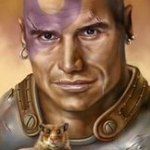
You search the lands for treasures and find them within the Obsidian Portal, in a land called Beregond. Like a glittering, magical jewel, one campaign shines brightly — it is “Wrath of the Highborn” by Keryth987! Within its many facets, you behold lands many decades in the making, fantastical stories written by a true entertainer, animated visuals and videos, and some surprises… is that a Klingon Bat’leth? Step forward into the not-quite-forgotten realms of this multi-award-winning GM to find out how he did it and how you can improve your own campaigns…

- Congratulations on your third, winning campaign! We know from your previous interviews that you’ve been playing since 1991 and have been using Obsidian Portal for almost a decade and a half, now. What changes in the world of gaming have you seen in that time which have had the greatest impact on you and your group?
First off, thanks. It’s nice to see what is a Labor of Love for me to get acknowledgement. Regarding changes in the world of gaming, I’d have to say the presence of computers and technology, along with the growing popularity of TTRPGs in general. When my group began playing it was 2nd Ed D&d and everything was pen and paper with dice, some miniatures, and a GM screen. Now everyone has a laptop or pad at their seat, with Obsidian Portal and D&D Beyond open as we play 5e for the current game (Other non-D&D Campaigns well, no Beyond being used of course). It’s also been nice to see gaming go from a fringe hobby to the popular activity it is now.
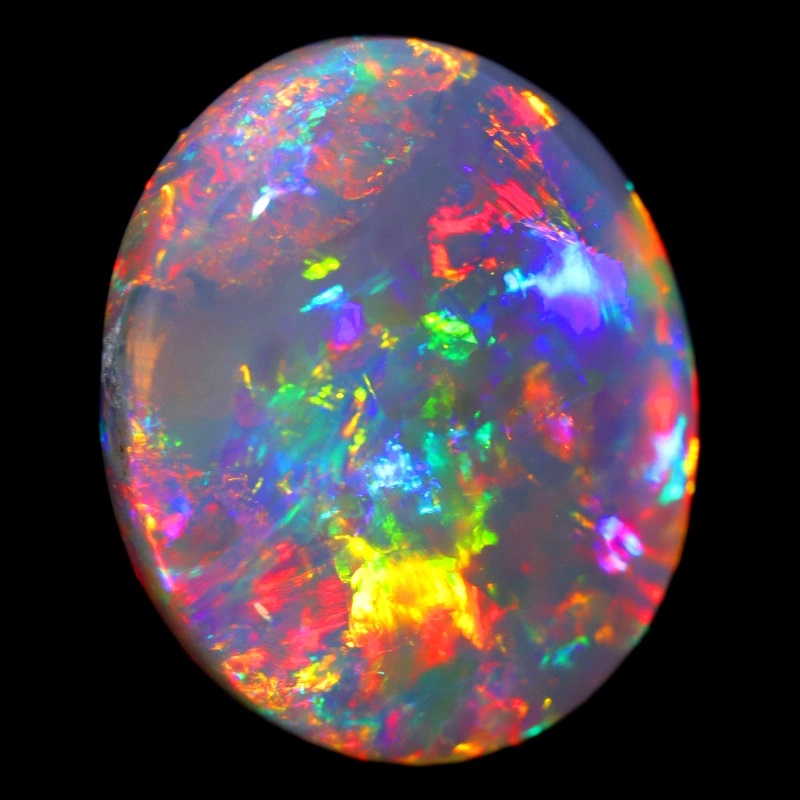
- The Chronicle section of “Wrath of the Highborn” details the journey of your players with some very excellent writing, from a simple village meeting to epic battles with dragons and demons. Can you give us a brief synopsis of the campaign, so far?
Well, this campaign actually comes out of my previous D&D Campaign, “A Rising Darkness.” In that campaign, the group of PC’s ended up needing to free a powerful elven sorceress to obtain something they needed to stop the Big Bad. That sorceress helped them in turn by also eliminating one of the lieutenants of the campaigns Big Bad, who just so happened to be the Elven Queen who had exiled her in the first place. She then went on to take over the city her rival once ruled and began building an army and playing conqueror, all while sending those she dubbed Her Chosen (and provided with a means of automatic resurrection should they die) with recovering some powerful magic relics called The Jewels of Aelis. The current party, through discovery, divine messengers, and prophecy, learned of this and have taken up the cause of defeating The Highborne Queen, recovering The Jewels of Aelis before she does, and destroying them.
The campaign began with them escorting the daughter of a prominent merchant from Goldshire, along the Sword Coast, across the Trackless sea, to Maztica, where they journeyed to Fort Flame. It was about the time of their arrival in Maztica, that they learned of the Jewels and The Highborne Queen’s goals. Since then the group has been following what evidence they have gathered as to where the various Jewels are, recovering them, and trying to find a way to destroy them, all while dodging The Highborne Queen’s Chosen, as well as some other enemies they have made along the way. As of the writing of this, they are off in Kara Tur, trying to infiltrate the Monastery of the Black Moon, to recover the last of the Jewels that have not already been recovered by either them or The Highborne Queen.
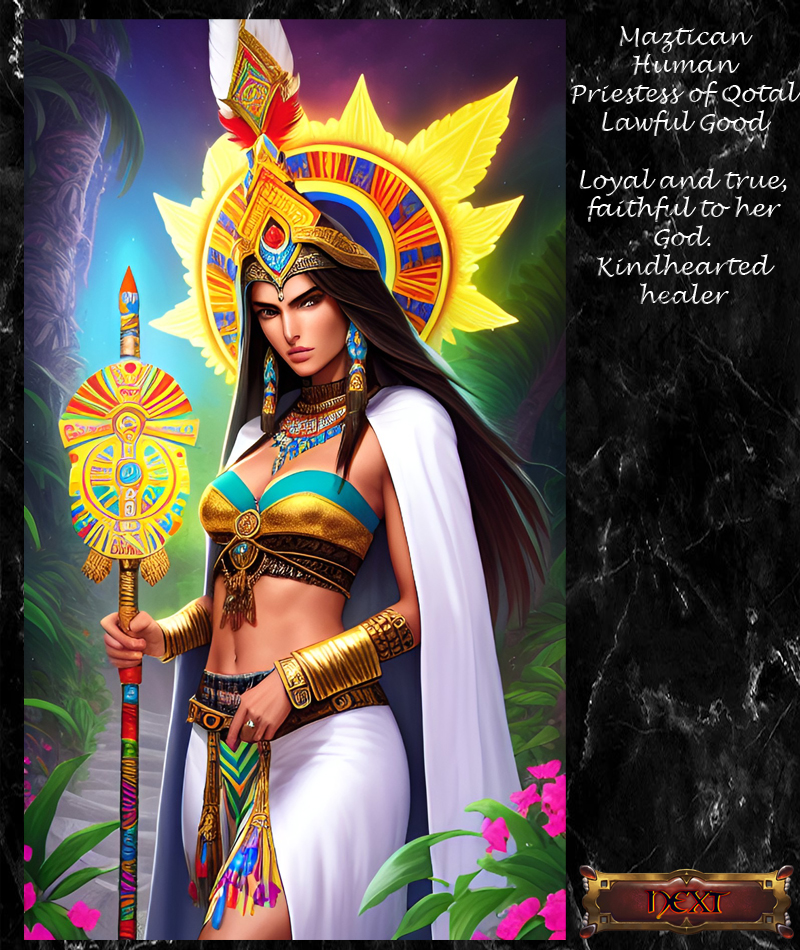
- “Wrath of the Highborn” is set in Beregond — a world adapted and expanded from Forgotten Realms material — and is also part of a shared set of worlds called “Chornalth” which are written and organized by other GM’s. Are there any challenges or advantages when dealing with interconnected planets and stories managed by other game masters?
Not really. We’ve been sharing “Chornalth” now for some time (The other two worlds being Liga – a heavily modified Oerth/Greyhawk Adventures, and Krynn – a highly modified Dragonlance world with some Dark Sun and others thrown in). Everyone in our group is pretty good at separating player knowledge form character knowledge, so when there is crossover, we are usually able to confer well and still not ruin the RP and sense of wonder while ensuring no one steps on another GM’s toes or messes something up in the other GM’s world. It also is a nice thing to have the shared world, as the last campaign on Liga (a Pathfinder Campaign) and actions taken by those PCs were what was utilized by the Big Bad of “A Rising Darkness,” to release his evil Over-Deity from his prison, which the events of, in turn, provided the villain for Wrath of the Highborne. It’s fun being able to play in one’s own sandbox sometimes as well, so, having the crossover ability allows that to happen both character wise as well as lore and interaction.
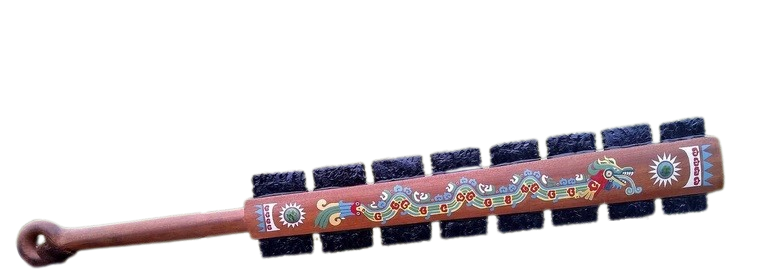
- Decades of work have gone into Beregond and it shows — one of your previous winning campaigns was set in the same world. Is “Wrath” connected in any way to the previous stories of “A Rising Darkness” or are your players treading on entirely new territory?
Well, as mentioned previously, the villain of “Wrath,” The Highborne Queen herself, was a sort of ally of the PCs in Rising, and two of the PC’s in “Wrath” – Shalryssia Peshlakai and Vimesh Damocles, are related to two PC’s from “Rising” – Sylmara Skystriker and Vito Damocles respectively. However, the party has covered far more territory than in past campaigns as they’ve also adventured outside of my modified Faerun, venturing to the continents of Maztica and Kara Tur, and even up into Selune’s Tears via spelljammer.
- Your site visuals are always outstanding and you’ve been incorporating video and audio components with your games for some time now. For GM’s who want to emulate those same techniques, what advice would you give or what digital tools and resources would you recommend?
Well, the videos are made using Wondershare Filmora, and the music is usually edited as needed in Audigy. I’m rather proud of the two videos for “Wrath,” both the Teaser on the Main page as well as the Introduction/Opening Credits that is listed as the Prologue for each Book on the site). As for the artwork, lots of Photoshop work, and, I have to admit some AI tools for base images. – Specifically Dream by Wombo. I know many frown on AI art, but were I to rely on my art skills, everything would be stick figures and such. The AI lets me take my ideas and those of my players and turn them into images that can be used, though not a single on has not been manipulated via photoshop, whether it’s to create and entirely new image such as the campaign background (there are, according to the folder on my PC, 20 separate images utilized in that), creating the many Book Covers (angain 8-10 base images to produce the various components and then Photoshop to put the elements all together), to modifying the skin colors and eyes of images so Night Elves and Genasi and Half Drow match the player’s vision of their character. It also lets us let our characters not only be “This character looks like Alessandra Ambrosio as a Maztican Priestess of Qotal” as a text or vocal description, but actually be able to see the character’s physical appearance.
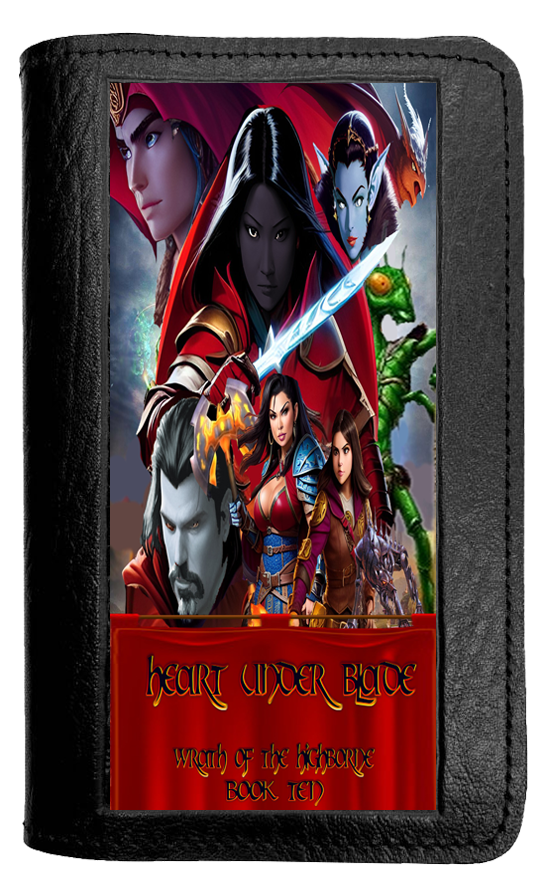
- You have extensive experience with lots of different gaming systems — story-driven like Dresden Files, more rules-focused like D&D, and everything in between. In your opinion, is the game system critical to the success of a campaign or is it just a personal preference?
To be honest, the system isn’t as important to a campaign’s success as much as those involved in playing it – both GM and Players. My group’s been blessed for many years to have had plenty of great players and storytellers. Some have since moved on from the gaming table either due to Real Life commitments or moving out of the area, and others have joined the group to take their place, but in a gaming group that meets regularly every week and has done so since the 90s, we’ve only had to ask 2 people to leave the group due to issues. The heart of any successful campaign is not the setting or the system, but the people playing the game.
- You don’t shy away from mixing and matching elements from different settings to get the kind of game you want, like bringing in a race from a futuristic TV series or movie into a fantasy game like “Wrath.” Have you ever run into any unexpected problems when introducing something like this? Is there a lot of prep-work involved to make it all fit together or can you just make adjustments after enough years of GM experience?
Well, in “Wrath,” adding in Mass Effect’s Asari was a bit of a challenge…but eventually I found a way to make it work based on the lore I’d created for Beregond and “Chornalth” in general. Others, the idea of how to bring them in just came to me suddenly. And some, like the Draenei and Night Eves of World of Warcraft, well, they were simply a modification of their origins as provided in their original source material. To be honest, the biggest problem caused by this would be a toss up between trying to figure out how to make Klingon weapons work stat-wise, or finding a location to place the Tharks of Barsoom. Seeing as how every race that has been added has been because I wanted said race available, it’s not been too much trouble. And now, with resources like OP and Beyond, it’s even easier as I am able to find resources for these already available to use rules wise.
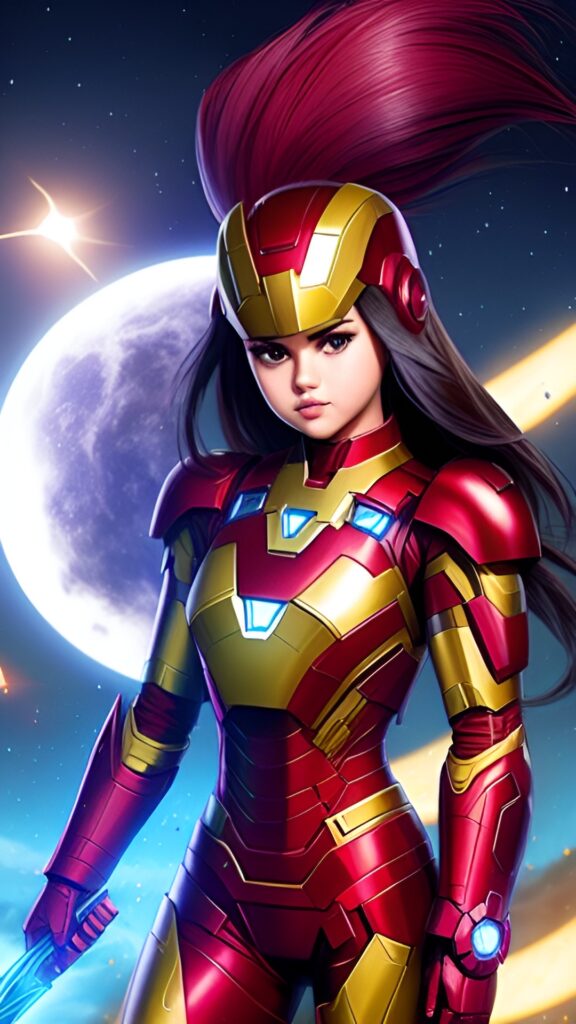
- Without giving too much away to your players, can you give us any hints about the future direction of “Wrath of the Highborn?”
Well, as mentioned they are working on retrieving the final Jewel that they know has not already been recovered. This is forcing them to infiltrate the Monastery of the Order of the Black Moon, a group of Shar worshiping Shadow Monks in Kara Tur (and something that came completely out of the background of one of the PCs, Koumori Shojo). This will bring the group into conflict with the Order’s Master Monk, as well as his followers and probably some Priests of Shar as well, After that, the players have indicated to me that they want to deal with the Red Wizard of Thay that once possessed one of the Jewels and that they have come into conflict with, as well as eliminating the remaining of The Highborne Queen’s Chosen. They also have a side quest for the Sha’ir Warlock in the group, Vimesh , to finish, as well as recovering the remaining Jewels from The Highborne Queen (which might cause them to destroy her). And then, finally, they need to discover the location of The Hall of Bones, to destroy the Jewels.
- Any plans for future campaigns that you would like to disclose? Or are you looking forward to a break while someone else runs the next game?
Well, I always am working on new campaign ideas. I have at least three concepts I’m tinkering with on OP now. But, the current plan is to resume our Savage Worlds campaign that was put on hold, then after that it looks like we might be playing a Planescape campaign, and one of the other players is hinting he is ready to start running the sequel to his last Pathfinder campaign. Honestly, the fact that pretty much everyone at the table is capable of and enjoys being a GM, is one of the reasons our group has lasted this long (the other being strong bonds of friendship). So, it looks like it will be a bit of time before I’m behind the screen again after this.

- Finally, Obsidian Portal readers are always hunting for helpful hints on how to better run their own games or build their sites. Do you have any particular tips or tricks that you would like to share?
Well, Obsidian Portal has been a godsend for me, enabling me to organize my thoughts and concepts and get them down somewhere solid, as well as to keep track of previous events in campaigns. As for developing sites themselves, Wolfhound’s tutorials over on his “Dresden Files Dallas” site are still a good place to start, as are the Obsidian Portal forums. However, the biggest help for me has been the Obsidian Portal Discord Server, where I have repeatedly gone for help and assistance on how to take an idea and make it work Textile/CSS wise (I’m looking at you Nuadaria and Abersade and others) and i highly recommend anyone interested in using Obsidian Portal go there, socialize, bring up their questions, and share their creations.
Alas, adventurer, our journey into Beregond is brief and too swiftly ended. With thanks to Keryth and his players, we turn our sights to other realms and future jewels of wondrous writing, clever coding, and delightful design. Do you know of a campaign worthy of notice? Perhaps your own, even. If so, send us word on the Community Forums or the Obsidian Portal Discord so that we may share the creativity of our gaming greats with everyone. Until next month, traveler!
Thank you to the community for making this campaign of the month possible! That’s all for now, join us on our next adventure April 1st, and don’t forget to nominate your favorite campaigns for our next Campaign of the Month!


